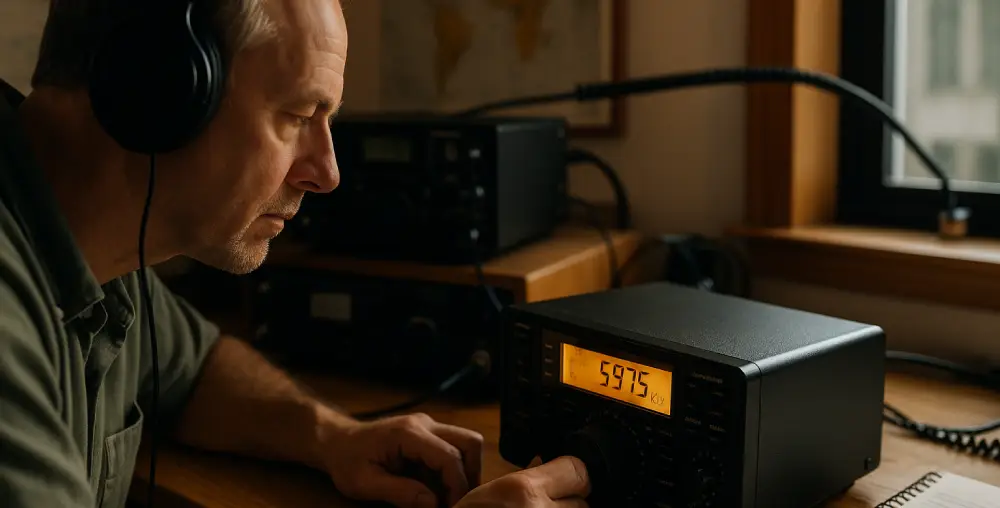In today’s hyperconnected world—where smartphones, social media, satellite communications, and instant messaging dominate how we stay in touch—it’s natural to wonder whether shortwave radio still holds any relevance. Once considered the pinnacle of long-distance communication, shortwave radio allowed people from opposite ends of the globe to speak, share ideas, and relay important information without relying on a centralized infrastructure. But in an era of 5G, fiber optics, and global Wi-Fi coverage, many may view shortwave as an outdated relic. Yet, beneath the surface of sleek apps and wireless convenience, shortwave radio continues to play a quiet but crucial role—especially where digital communication breaks down or becomes inaccessible.
Shortwave radio operates on high-frequency (HF) bands that can travel thousands of kilometers by bouncing off the Earth’s ionosphere, making it possible to reach remote and rural regions without any need for internet or satellite infrastructure. This independence from external systems gives shortwave a remarkable advantage during emergencies, natural disasters, political unrest, or when censorship disrupts conventional communication. For example, during major blackouts or geopolitical conflicts, shortwave radio has allowed aid agencies, journalists, and civilians to stay informed or coordinate efforts when internet and phone lines were down. It also remains a lifeline in countries where governments restrict online access or block specific platforms, making shortwave a tool for free and uncensored information.
Furthermore, many military organizations, aviation services, maritime operations, and amateur (ham) radio enthusiasts still rely on shortwave frequencies for long-distance communication. Unlike internet-dependent services that require electricity, cellular towers, or satellite access, shortwave radio can operate entirely off-grid, using just a simple radio set and an antenna. This makes it a valuable backup for preppers, survivalists, and humanitarian organizations that operate in rugged environments or disaster-prone areas. In fact, in places like Africa, Southeast Asia, or isolated regions of the Americas, shortwave radio remains a vital educational and broadcasting tool—often the only means to deliver news, weather alerts, and public health information.
That said, the technology is not without its limitations. Shortwave reception can be affected by atmospheric noise, solar conditions, or even time of day, making it less reliable than modern digital networks. The audio quality can also be poor compared to crystal-clear VoIP calls or streaming platforms. Moreover, younger generations—raised on instant notifications and social media—are largely unfamiliar with how shortwave works, contributing to its gradual decline in popularity. Manufacturers have also reduced production of shortwave radio sets in favor of newer digital solutions, further narrowing its mainstream visibility.
Still, recent years have seen a modest revival of interest in analog radio systems, driven by growing concerns about privacy, cybersecurity, and global instability. Shortwave radio offers a communication channel that is difficult to monitor, censor, or shut down—making it attractive for those who value autonomy and resilience. Even amateur radio operators have formed robust global communities, promoting knowledge-sharing, experimentation, and emergency preparedness through shortwave networks.
In conclusion, while shortwave radio may no longer be the primary mode of everyday communication, it continues to serve an essential role in specific contexts where digital systems fall short. Its independence, global reach, and resistance to censorship ensure that it remains more than just a nostalgic hobby—it is a tool of resilience, freedom, and global connection. As the world becomes increasingly digitized and centralized, the continued presence of shortwave radio offers a timely reminder: sometimes, the simplest tools are the most dependable.

Leave a Reply
You must be logged in to post a comment.